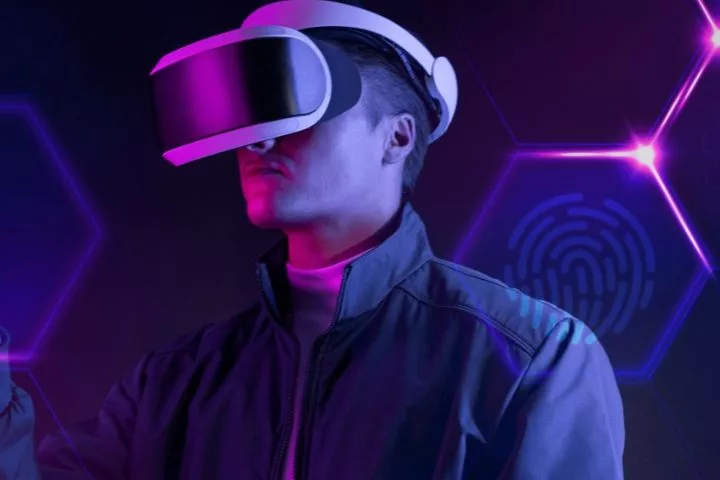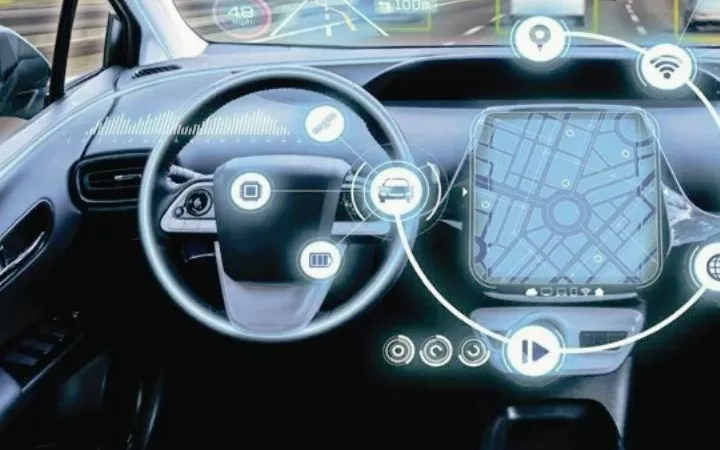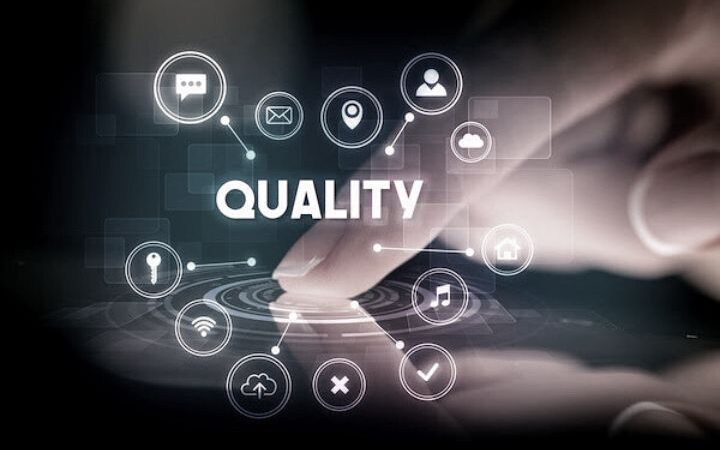Web AR and 5G: The Future of Augmented Reality

Augmented Reality (AR) is a technology that enhances the real-world environment with digital content, such as images, videos, and animations. In recent years, the popularity of AR has grown significantly, and it is now being used in various industries, including gaming, education, e-commerce, and more. Web AR and 5G
One of the most exciting developments in AR is the integration of web technologies, known as web AR. Web AR allows users to access AR experiences through their web browsers without downloading any apps. With the advent of 5G technology, web AR is set to revolutionize how we interact with the digital world.
What is Web AR?
Web AR is an augmented reality application that uses web technologies to create and deliver AR experiences for the web. It allows users to access AR experiences through their web browsers without downloading apps.
Users can access web AR content on any device with a web browser, including smartphones, tablets, and laptops.
One of the key advantages of web AR is its accessibility. With web AR, anyone can access AR content, regardless of their device.
This makes it an ideal platform for businesses and organizations to reach a wider audience and create engaging and interactive experiences.
Applications of Web AR
Web AR has a wide range of applications across various industries. Some examples of these applications include:
1. Web AR for the automotive industry
Automotive manufacturers use web AR to allow customers to configure and customize their vehicles before purchasing them. This will enable customers to see how different options and features would look on the car and make a more informed decision about their purchase.
2. Web AR for real estate and interior design
Real estate agencies use web AR to create virtual tours of properties. This allows potential buyers to see how a property would look before they visit in person by superimposing digital images of furniture and decor onto a live camera feed of the property.
Interior design companies use web AR to create virtual mock-ups of rooms and spaces. This allows customers to see how different design elements would look in their area before committing to a design plan.
3. Web AR for education
Educational institutions use web AR to create interactive and engaging learning experiences. For example, museums are using web AR to create virtual tours of exhibits and historical sites, which allows visitors to see and interact with artefacts in a new and exciting way.
4. Web AR for e-commerce
E-commerce companies are using web AR to create virtual try-on experiences for customers. This allows customers to see how clothes and accessories would look on them before they purchase them.
5. Web AR for tourism
Web AR is revolutionizing the tourism industry by providing users with an immersive and interactive experience. It makes it more accessible to a broader audience and allows for seamless integration with existing websites and social media platforms.
In tourism, Web AR can be used for various applications such as virtual tours, destination promotions, and historical recreations. This technology allows for a more engaging and memorable experience for tourists, ultimately leading to increased interest and revenue for the industry.
Overall, web AR is being adopted across various industries to create innovative and engaging experiences that enhance customer engagement and decision-making.
Web AR and 5G: The Perfect Mix
5G technology, with its faster speeds and improved reliability, enables the delivery of web AR content in real time without any lag or buffering. This allows web AR experiences to be more responsive, realistic and immersive.5G networks also allow for more detailed and complex digital content to be included in web AR experiences.
5G networks also support edge computing, which allows web AR to be more responsive, realistic and immersive.
Furthermore, 5G networks also allow for high-quality video streaming and real-time communication, greatly enhancing the web AR experience and making it more social and interactive.
In summary, the combination of web AR and 5G technology creates more immersive, responsive, and realistic web AR experiences that are accessible to a wider audience.
This partnership has the potential to revolutionize various industries and open up new possibilities for businesses and developers to create innovative and engaging web AR experiences.
5G and Real-Time Web AR
Integrating 5G networks with web AR technology will significantly enhance the performance and capabilities of real-time web AR experiences, providing users with a more immersive, realistic, and engaging experience.
This will open up new possibilities for various industries and create new opportunities for businesses and developers to create innovative and interesting web AR experiences.
5G networks will significantly impact the delivery and performance of real-time web AR experiences due to the following features:
1. Low Latency Support
One of the most significant benefits of 5G is its ability to support low latency, which is the time it takes for data to be transmitted from the device to the network and back.
This is crucial for real-time web AR experiences as it ensures that the digital content is displayed in sync with the user’s movements, providing a more immersive and realistic experience.
2. Higher Bandwidth
5G networks also have much higher bandwidth than previous generations of mobile networks, allowing more data to be transmitted faster.
Web AR experiences can include more detailed and complex digital content, such as high-resolution images, videos, and animations. This will enable developers to create more engaging and interactive web AR experiences, which will be accessible to a broader audience.
3. Edge computing
5G networks also support edge computing, which brings the processing power closer to the device, reducing the time it takes to transmit data and improving the overall performance of web AR experiences.
This will enable web AR experiences to be more responsive and realistic, providing users with a more immersive and engaging experience.
4. High-quality streaming and communication
In addition, 5G networks allow for high-quality video streaming and real-time communication, which will significantly enhance the web AR experience.
This will enable users to share their web AR experiences with others in real-time, creating a more social and interactive experience.
A potential application of Web AR – 5G collaboration: remote assistance
Another aspect of Web AR and 5G is its potential to revolutionize the field of remote assistance and telepresence. With Web AR, technicians and experts can remotely access and interact with equipment, machines, and systems in real-time, using AR to visualize and control them from a distance.
This can significantly improve the efficiency and effectiveness of remote maintenance, repair, and troubleshooting tasks.
For example, imagine a scenario where a technician is remotely troubleshooting a complex piece of machinery.
With Web AR, the technician could access a live feed of the machinery and use AR to overlay digital information and controls onto the live feed, allowing them to diagnose and fix the problem in real-time.
With 5G, this type of remote assistance can be done with near-zero latency, which enables real-time interactions and control, making the process more efficient and accurate.
This can significantly reduce downtime and costs for businesses and organizations, particularly in the manufacturing, construction, and logistics industries.
In addition, the ability to use Web AR for telepresence, where a remote expert can virtually “be” on-site through an avatar, can enable them to provide training, guidance and assistance as if they were physically present.
Web AR and 5G partnership: The Green Planet AR Experience
The Green Planet AR Experience is an example of how web AR and 5G technology can be combined to create an immersive and educational experience. This experience would allow users to explore and learn about different ecosystems and habitats worldwide, such as forests, oceans, and deserts.
The Green Planet AR Experience, powered by EE, is a unique and innovative use of 5G and AR technology. Using a 5G standalone private network, the experience can deliver immersive, real-time AR content that takes visitors on a virtual journey through different natural environments.
The high-bandwidth and low latency of the 5G network allow for high-end graphics and detailed digital content, while edge computing enables the experience to be responsive and realistic.
AR technology in this context allows visitors to interact and engage with digital content in a way that is impossible with traditional forms of media. It also allows visitors to learn about the natural world and the impact of human actions on the environment engagingly and interactively.
This showcase represents a great way to raise awareness of the importance of preserving the environment, and the positive impact technology can have in this field.
Upcoming Developments in Web AR and 5G
As both these technologies continue to advance, so do the possibilities for Web AR and 5G. Here are some of the upcoming developments in these two technologies that are worth keeping an eye on:
1. Increased Adoption of Web AR
The rise of Web AR can change how businesses and industries interact with customers and users. From e-commerce to education, Web AR has a wide range of applications that can enhance the user experience and bring new and innovative solutions.
For example, in e-commerce, Web AR can allow customers to see how products would look in their homes before making a purchase, leading to increased confidence in the buying process.
In education, Web AR can provide a more engaging and interactive way for students to learn, bringing subjects to life in a way that traditional methods cannot.
As more businesses and industries realize the potential of Web AR, we expect to see a significant increase in its adoption shortly.
2. Integration with AI and Machine Learning
AI and machine learning are also technologies that continue to advance, and so will the capabilities of Web AR. This integration will allow for a more personalized and intuitive AR experience, with AI and machine learning powering the interactions.
For example, AI could provide recommendations to users based on their past AR experiences or interests, making the experience more personalized and enjoyable.
The AR experience could become more dynamic with machine learning, adapting to the user’s behaviour and preferences in real-time. This integration is set to take Web AR to the next level, providing users with a more engaging and interactive experience.
3. Expansion of 5G Networks
With the widespread adoption of 5G, we expect continued expansion of 5G networks, providing users with even better coverage and faster speeds. This will be particularly beneficial for Web AR, as it requires a robust and reliable network infrastructure to support the demands of AR experiences.
The expansion of 5G networks will allow for a more seamless and uninterrupted AR experience, enabling users to access AR content faster and more smoothly. This will be particularly important for AR applications that require real-time data, such as augmented reality games or remote collaboration tools.
4. Increased Focus on Privacy and Security
As Web AR and 5G become more widespread by the day, there will be a greater focus on privacy and security. With these technologies collecting and storing large amounts of data, there is a need for new technologies and systems to protect users’ data and ensure their privacy.
For example, using blockchain technology or encrypted communications could help secure the transfer and storage of sensitive data. Additionally, we can expect to see the development of new privacy regulations to protect users’ data and ensure that companies are transparent about their data practices.
The increased focus on privacy and security is crucial for the long-term success of Web AR and 5G, ensuring that users can enjoy these technologies with confidence and peace of mind.
The future is bright for Web AR and 5G, with exciting developments on the horizon. These two technologies have the potential to revolutionize the way we interact with digital content and bring about new and innovative experiences for users.
Conclusion
In conclusion, web AR and 5G technology are set to revolutionize how we interact with the digital world. Web AR, with its ability to deliver AR experiences through web browsers, has made AR accessible to a broader audience and has opened up new opportunities for businesses and organizations to create engaging, interactive experiences.
And no-code experience building platforms like PlugXR are disrupting the way WebAR applications are built. Integrating 5G technology with web AR will significantly enhance the performance and capabilities of these experiences, providing users with a more immersive, realistic and engaging experience.
With the advent of 5G technology, we can expect to see an explosion of web AR experiences that will change how we live, work and play.
The combination of web AR and 5G will open up new possibilities for various industries and create new opportunities for businesses and developers to create innovative and engaging web AR experiences.






